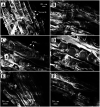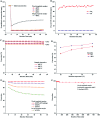A TiO2/C catalyst having biomimetic channels and extremely low Pt loading for formaldehyde oxidation
- PMID: 35518097
- PMCID: PMC9060426
- DOI: 10.1039/c8ra10314c
A TiO2/C catalyst having biomimetic channels and extremely low Pt loading for formaldehyde oxidation
Abstract
This study presents a TiO2/C hybrid material with biomimetic channels fabricated using a wood template. Repeated impregnations of pretreated wood chips in a Ti precursor were conducted, followed by calcination at 400-600 °C for 4 hours under a nitrogen atmosphere. The generated TiO2 nanocrystals were homogenously distributed inside a porous carbon framework. With an extremely low Pt catalyst loading (0.04-0.1 wt%), the obtained porous catalyst could effectively oxidize formaldehyde to CO2 and H2O even under room temperature (conv. ∼100%). Wood acted as both a structural template and reduction agent for Pt catalyst generation in sintering. Therefore, no post H2 reduction treatment for catalyst activation was required. The hierarchal channel structures, including 2-10 nm mesopores and 20 μm diameter channels, could be controlled by calcination temperature and atmosphere, which was confirmed by SEM and BET characterizations. Based on the abundant availability of wood templates and reduced cost for low Pt loading, this preparation method shows great potential for large-scale applications.
This journal is © The Royal Society of Chemistry.
Conflict of interest statement
There are no conflicts to declare.
Figures








Similar articles
-
Preparation and characterization of TiO2 based on wood templates.Sci Rep. 2020 Jul 24;10(1):12444. doi: 10.1038/s41598-020-69440-x. Sci Rep. 2020. PMID: 32710009 Free PMC article.
-
Active Site-Directed Tandem Catalysis on Single Platinum Nanoparticles for Efficient and Stable Oxidation of Formaldehyde at Room Temperature.Environ Sci Technol. 2019 Apr 2;53(7):3610-3619. doi: 10.1021/acs.est.9b01176. Epub 2019 Mar 14. Environ Sci Technol. 2019. PMID: 30835446
-
Effect of TiO2 Calcination Pretreatment on the Performance of Pt/TiO2 Catalyst for CO Oxidation.Molecules. 2022 Jun 16;27(12):3875. doi: 10.3390/molecules27123875. Molecules. 2022. PMID: 35744997 Free PMC article.
-
Catalytic reaction mechanism of formaldehyde oxidation by oxygen species over Pt/TiO2 catalyst.Chemosphere. 2020 Jun;248:125980. doi: 10.1016/j.chemosphere.2020.125980. Epub 2020 Jan 22. Chemosphere. 2020. PMID: 32004886
-
Synthesis of Pt-Loaded NiFe-LDH Nanosheets on Wood Veneer for Efficient Gaseous Formaldehyde Degradation.ACS Appl Mater Interfaces. 2020 Aug 19;12(33):37147-37154. doi: 10.1021/acsami.0c09016. Epub 2020 Aug 5. ACS Appl Mater Interfaces. 2020. PMID: 32692146
Cited by
-
C-Dot TiO2 nanorod composite for enhanced quantum efficiency under direct sunlight.RSC Adv. 2020 May 21;10(33):19490-19500. doi: 10.1039/d0ra03157g. eCollection 2020 May 20. RSC Adv. 2020. PMID: 35515458 Free PMC article.
References
LinkOut - more resources
Full Text Sources
Other Literature Sources

